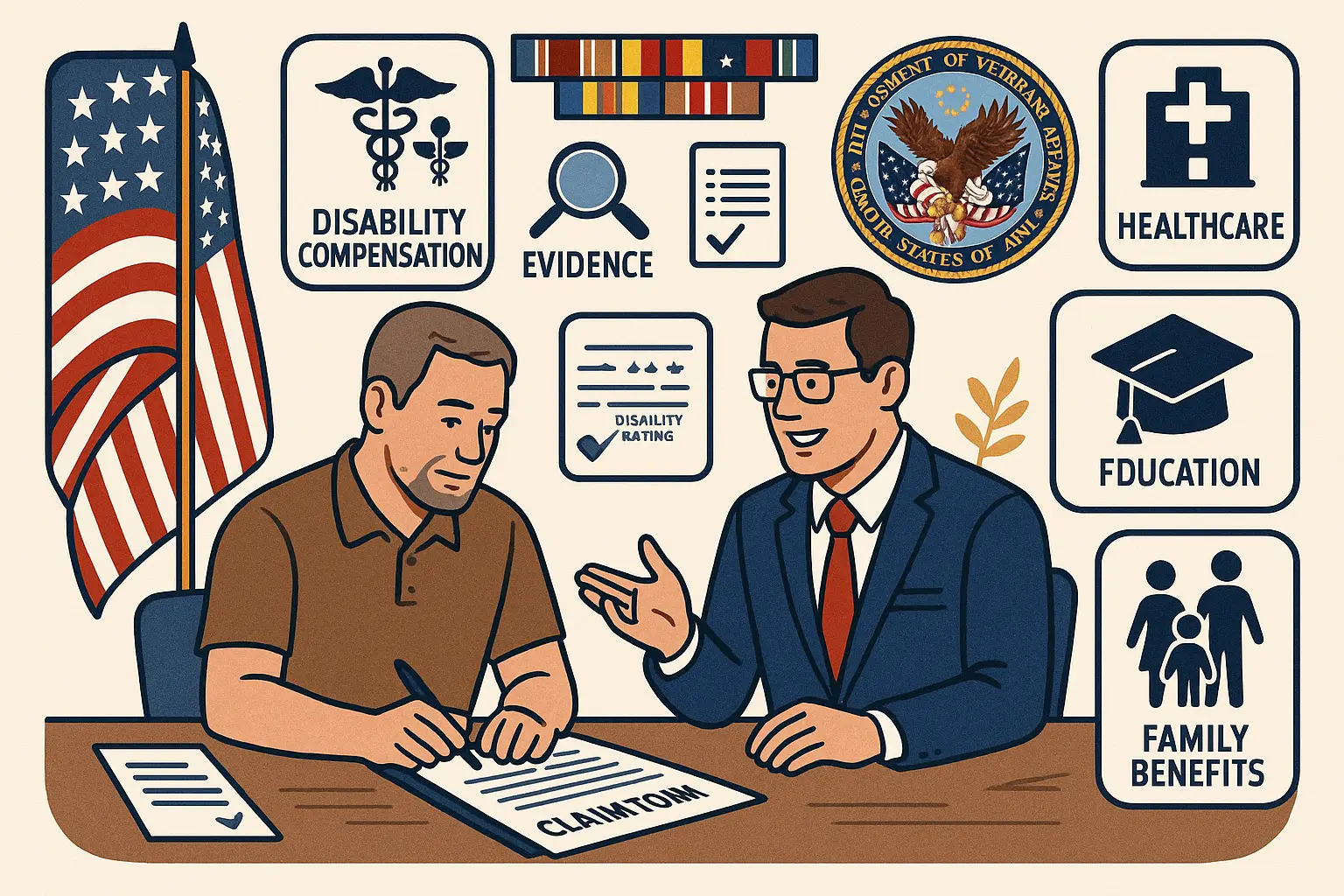Navigating government programs can feel overwhelming for applicants and families, especially when multiple agencies, requirements, and benefits are involved. Program comparisons are a practical way to evaluate eligibility, application steps, and available resources. By examining differences across federal government, state, and local initiatives, individuals can find resources that match their needs for financial assistance, health care, affordable rental housing, and other critical services.
Government entities manage thousands of programs across the nation. These include funding for affordable housing, rental assistance, food benefits, Medicare, disability programs, child support enforcement, and legal services. Low-income families, older adults, veterans, students, caregivers, and tribal governments often depend on these services for stability and recovery after disasters or life changes. Understanding program comparisons ensures applicants identify benefits quickly, avoid missed opportunities, and access vital support.
Understanding Different Levels of Programs
Federal Programs
The federal government provides programs that operate nationwide under consistent rules. These are typically funded by federal taxes and administered by agencies such as the Department of Housing and Urban Development, the Department of Education, or the Social Security Administration. Examples include:
- Affordable housing programs – Applicants may qualify for support through programs such as Section 8 rental assistance, which helps reduce housing costs by subsidizing rent for eligible households.
- Financial assistance for education – Students can receive financial support through federal programs, including Pell Grants and student loans, which provide funding for tuition, fees, and other educational expenses.
- Health care coverage – Eligible individuals may access essential medical services through federal programs like Medicare and Medicaid, which provide health coverage for seniors, low-income individuals, and those with specific medical needs.
- Disability benefits – Individuals who cannot work due to long-term health conditions may be eligible for disability benefits under the Social Security Disability Insurance (SSDI) program, which provides financial assistance to qualified applicants.
Federal programs are designed to reach millions of Americans, including low-income families, veterans, older adults, and students.
State Programs
State programs supplement federal efforts with more localized control. Each state manages funding, eligibility, and application requirements differently. These often include:
- State Medicaid expansions and health care services – Many states offer expanded Medicaid coverage and additional health care services to eligible residents, helping individuals and families access essential medical care at reduced or no cost.
- Unemployment insurance programs – Workers who lose their jobs or cannot continue employment may qualify for state-administered unemployment insurance benefits, which provide temporary financial assistance during periods of job loss.
- State-level housing or rental support – Some states provide housing subsidies or rental assistance programs through local housing authorities, helping low-income individuals and families secure safe and affordable housing.
- Scholarships and grants for higher education – State governments often award scholarships and grants to students pursuing higher education, offering financial support that does not need to be repaid.
Because requirements differ, applicants must review state-specific details, file within deadlines, and provide region-based documentation.
Local and Tribal Programs
Local governments and tribal governments provide services tailored to their communities. Local housing authorities manage public housing units, rental vouchers, and affordable housing facilities. Community organizations often oversee food banks, caregiver support programs, and recovery assistance after disasters. Tribal governments administer unique programs for affiliated members, including education, job training, and legal services.
These programs emphasize community connection, making it easier for residents to identify resources, apply for aid, and participate in support services near their location.
Comparing Eligibility Requirements
Eligibility criteria vary across programs, but most fall into three main categories:
- Income-based eligibility: Programs such as affordable rental housing, food benefits, and Medicaid often use Federal Poverty Guidelines to determine income limits. Families who meet income requirements may qualify for rent support, health insurance, or food benefits.
- Categorical eligibility: Some programs serve specific groups, including veterans, students, older adults, and children. Child support programs, Pell Grants, and caregiver services are examples.
- Geographic eligibility: Residency requirements apply to many programs, particularly local housing, tribal benefits, or disaster recovery support. Applicants must usually prove they live in a defined service area.
By comparing these eligibility rules, applicants determine which programs they are most likely to qualify for, saving time and avoiding rejections.
Comparing Application Processes
Federal Applications
Federal government programs often use centralized online portals to make the application process easier and more accessible for applicants. These platforms allow individuals to explore benefits, check eligibility, and submit applications in one place:
- Benefits.gov – This portal provides a personalized list of potential benefits by asking applicants eligibility questions. It serves as a central hub for federal and state assistance programs.
- Healthcare.gov – Applicants can use this site to explore health insurance options, apply for coverage, and determine eligibility for Medicaid and the Children’s Health Insurance Program (CHIP).
- StudentAid.gov – This platform manages the Free Application for Federal Student Aid (FAFSA), enabling students to apply for scholarships, federal grants, loans, and work-study programs to help pay for higher education.
Applicants must typically submit Social Security numbers, tax returns, and documents verifying income, rent, or medical expenses.
State Applications
State programs require applications through specific portals or agencies. For instance:
- Unemployment insurance is filed through a state workforce bureau.
- Departments of health or human services may manage state Medicaid applications.
- Housing programs may rely on region-based waiting lists or enrollment periods.
Applicants must be prepared to submit local documents such as residency verification, state IDs, or past financial records.
Local Applications
Local and tribal governments often use paper applications or in-person interviews. Housing authorities may require facility tours, interviews, or volunteer commitments before final approval. Nonprofits affiliated with states or communities often assist with completing forms, organizing required documents, and answering questions.
Comparing Program Benefits
Financial Assistance Programs
Programs such as TANF, Pell Grants, and SNAP provide cash or vouchers to cover expenses like food, rent, and school costs. Pell Grants are especially useful for students unable to afford tuition, while SNAP offers food assistance to families nationwide.
Housing and Rental Assistance
Affordable rental housing programs help low-income families and seniors pay for homes. Section 8 housing vouchers and HUD public housing facilities allow qualified applicants to access safe housing without overwhelming financial burdens. These programs also support homeowners recovering from disasters.
Health Care Programs
Medicare and Medicaid provide health care coverage to older adults, people with disabilities, and low-income families. These programs pay for medical services, hospital care, prescription drugs, and preventive care. CHIP supports children who need coverage when parents cannot afford private insurance.
Educational Support
Students benefit from Pell Grants, scholarships, and federal work-study programs. Educational aid helps families cover tuition, books, and living expenses, ensuring more Americans can access higher education and career training.
Specialized Assistance
The Department of Veterans Affairs provides services to veterans, including disability compensation, housing loans, and health facilities. Caregivers and older adults may access supportive services such as meal delivery, transportation, or home care.
Program Coordination and Interactions
Government entities often coordinate programs to simplify access. For example, qualifying for SNAP may make families eligible for energy assistance or free school lunch programs. Medicaid applications may automatically determine eligibility for other health-related services.
Applicants should prepare for program recertification and maintain documents like pay stubs, medical records, and rent receipts to avoid losing benefits. Coordinated systems reduce paperwork and ensure applicants receive full support.
Application Strategies and Best Practices
- Prepare documents early – Applicants should collect necessary paperwork, such as identification, income statements, and rental agreements, before starting an application. Having these materials ready helps avoid delays and ensures that submissions are accurate and complete.
- Use screening tools – Online platforms like Benefits.gov allow applicants to answer a few questions and receive a customized list of potential programs. These tools can save time and help individuals identify benefits that match their needs.
- Submit on time – Although application Deadlines vary by program, missing them can delay approval or even result in lost benefits. Applicants should review all instructions carefully and submit forms promptly to protect their eligibility.
- Maintain records – Keeping copies of applications, notices, and supporting documents is essential. These records serve as evidence if a case is reviewed later or an appeal is needed.
- Seek local support – Community organizations, nonprofits, and volunteers can provide valuable technical assistance during the application. This support is invaluable for seniors, veterans, and low-income families facing additional challenges.






